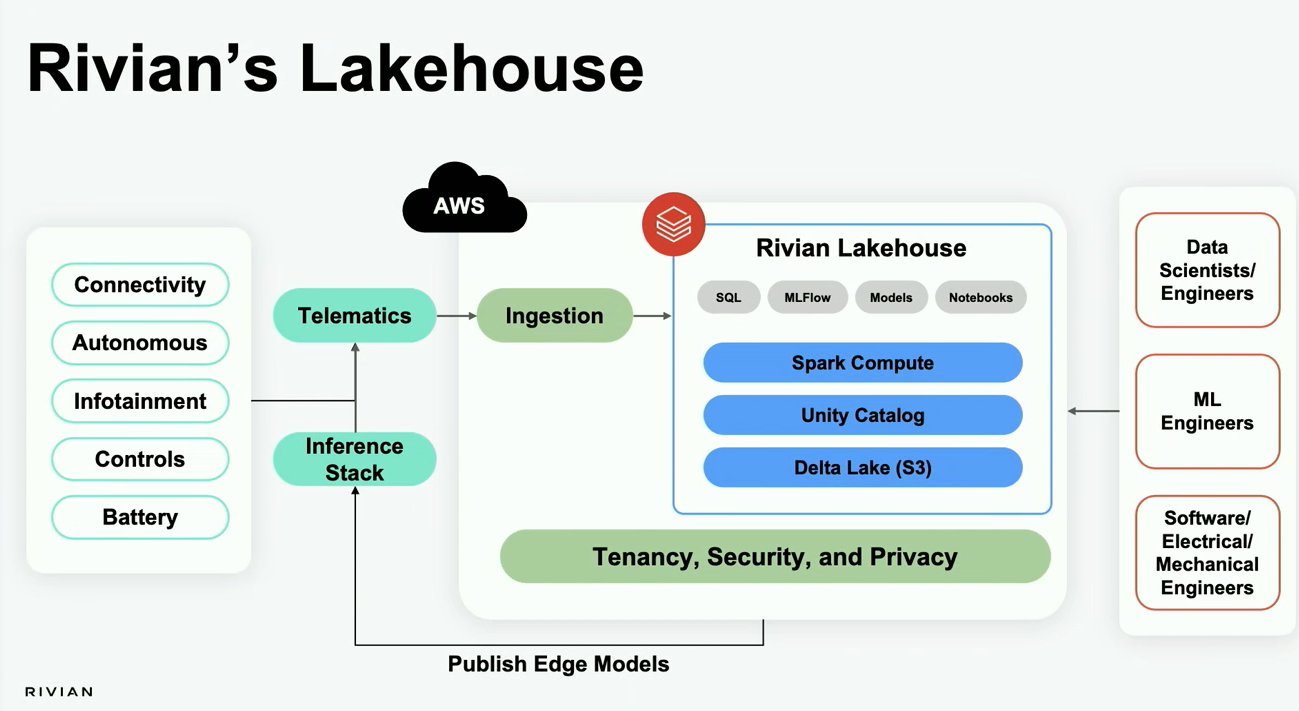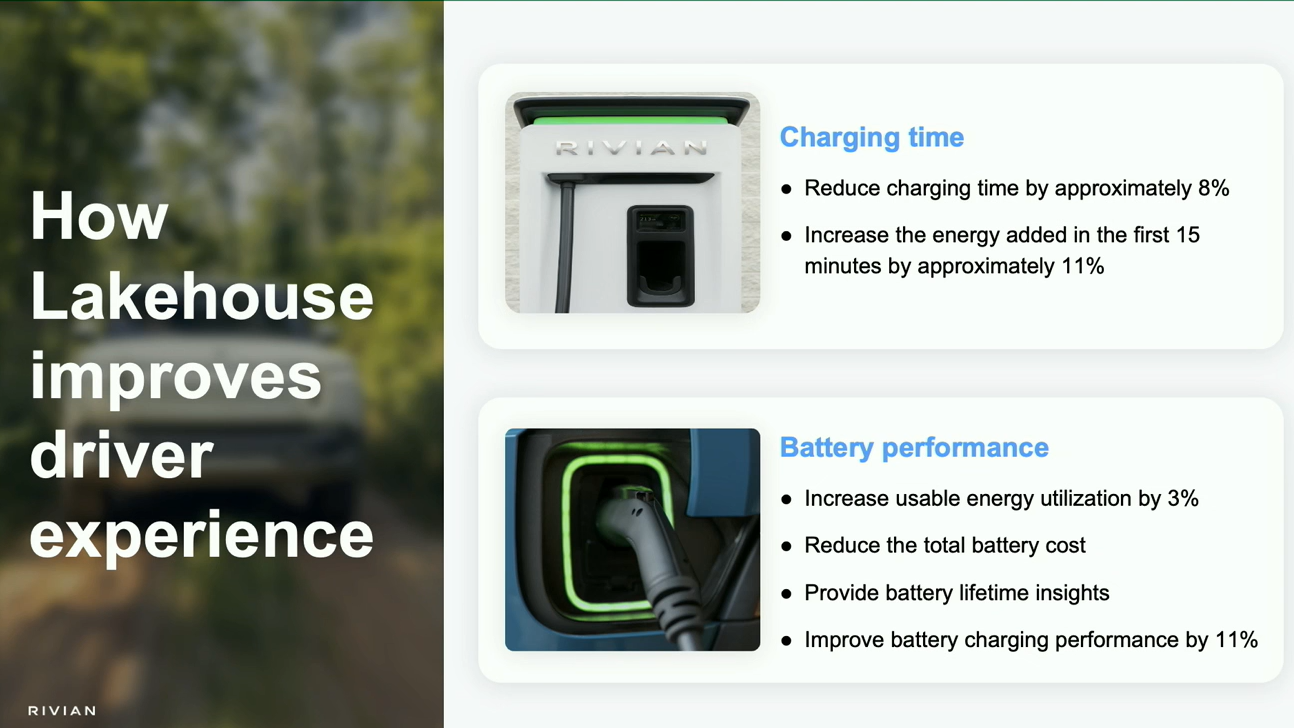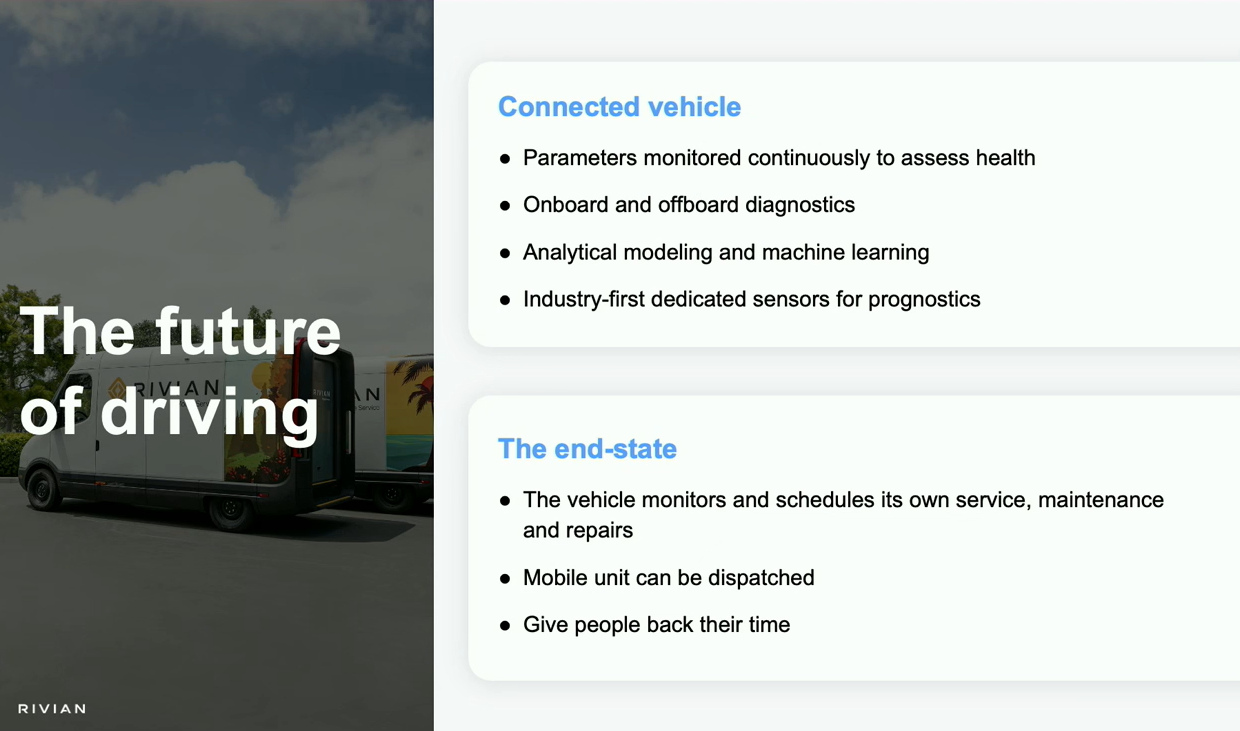Rivian is betting that data, AI and machine learning will continually improve its customer experience and detect and prevent future vehicle issues.
Speaking at the Databricks Data + AI Summit, Wasssym Bensaid, SVP of Software Development at Rivian, walked through how the electric vehicle manufacturer created an architecture that enables it to ingest telemetry data from vehicles, boost battery life and roll out new features with over-the-air (OTA) updates.
Bensaid said that the data ecosystem for EV makers goes well beyond autonomy and other technologies that grab headlines. "With software defined vehicles and an amazing hardware platform you can have all-in-one vehicles," he said. "Everything at Rivian is data driven from our supply chain to manufacturing to the customer relationship."
Rivian said it produced 13,992 vehicles in the second quarter and said it is on track to produce 50,000 for the year.
Speaking at an investor conference June 15, Rivian CFO Claire McDonough said the EV maker is looking to own "the full end-to-end ownership experience for commercial customers and for consumers as well." On the commercial side, Rivian counts Amazon as its flagship customer with a purpose-built delivery vehicle connected to fleet management software called FleetOS.
Data from the Rivian vehicle is shared with Amazon's back-end software system to improve efficiency and make life easier for drivers with perks like cooled seats.
For consumers, McDonough outlined:
"What we started with was how to create a seamless transaction experience. If you go online and you buy a Rivian, you can purchase, right, insurance, financing, trade-in your vehicle in about 6 minutes. Is that convenient and fast? Some of the early investments we’ve made have really ensured that we had this integrated experience for our customers with services like financing and insurance. Over time, we’re constantly updating our vehicles with over-the-air updates. And we’ve added incremental drive modes and feature sets to the vehicles. Over time, we will have the opportunity to create features that can be bundled or paid features for consumers. But right now, we’re really excited about offering continuous value accretion for Rivian owners that have seen the range of their vehicles, increase over the lifespan of their ownership and true enhancements to some of the new drive modes that we’ve offered as well."
The architecture
Bensaid said Rivian initially struggled with data silos and multiple systems, data types and tools. Rivian also had a team of experts focused on Rivian's data strategy and ultimately became the bottleneck. As a result, Bensaid said Rivian moved to democratize access to data while ensuring security, privacy and governance.
Rivian used Databricks and its Lakehouse platform to build a new architecture on top of data lakes that could scale. Bensaid said Rivian also uses Databricks Unity Catalog to create one version of the truth.

The EV maker has automated more than 95% of its Databricks provisioning workflows. Rivian's stack includes a data and analytics layer that runs through Rivian technology, cloud, product development and operations, products and services.
"We're using data and AI to achieve and unlock business outcomes," said Bensaid.

Ultimately, Rivian is planning to improve the customer experience and become more predictive about maintenance and improving performance. "Imagine a world where a vehicle will self-monitor its health and schedule its own appointments to deliver an amazing experience."



